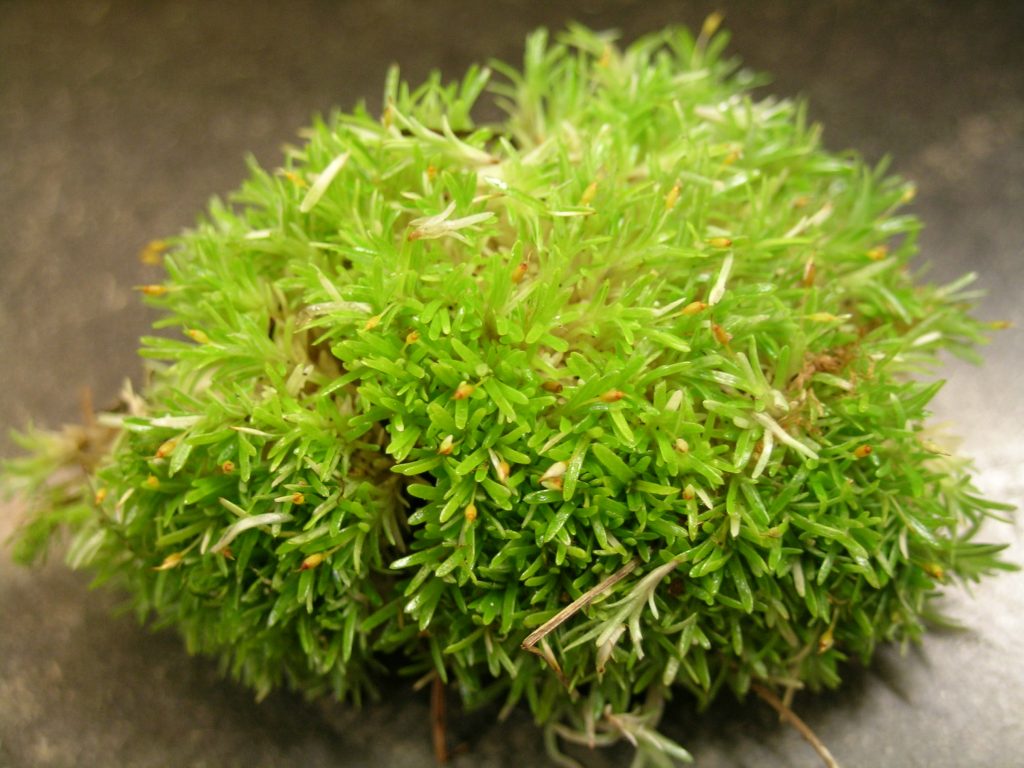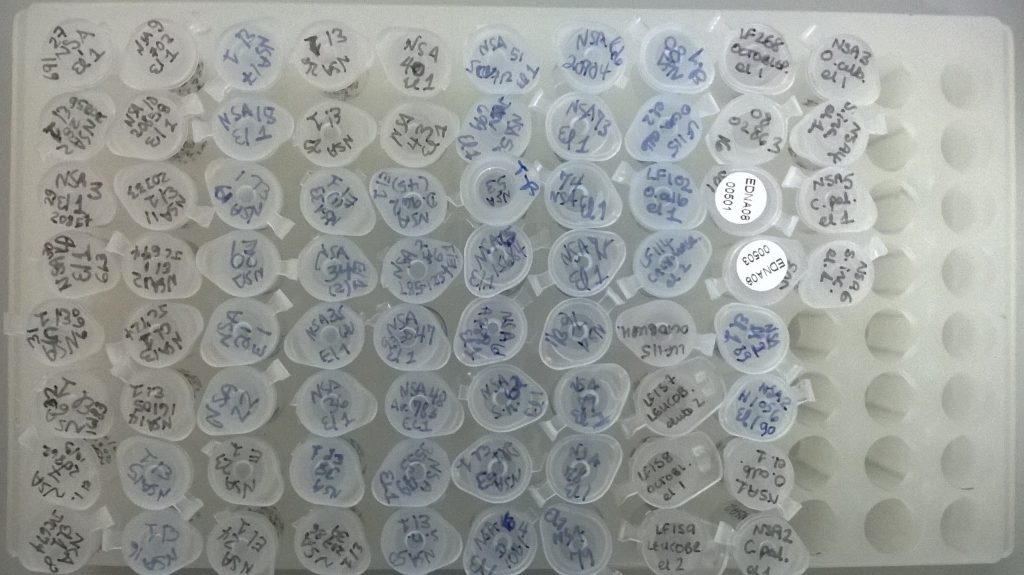Spring Break’s a big thing in the US, and spring of 2005, Juan Carlos Villarreal and I spent ours on a road-trip down through Louisianna, looking for the under-collected hornwort genus Sphaerosporoceros so that it could be added into a hornwort sequence phylogeny that was being generated in Karen Renzaglia’s lab at Southern Illinois University, Carbondale. I remember this collecting trip as a tour of the interstate rest areas of the southern US, which are prime hornwort habitats, although to be fair we did add in a short stop in New Orleans – and, of more relevance to this posting, a side-trip to Panama City. That’s not Panama, Central America, but a small city in Florida, on the Gulf of Mexico. And on the Florida leg of the trip, Juan Carlos collected the moss Octoblepharum albidum, which was growing on the trunk of a tree-fern.
Fast-forward to 2013, and the DNA from the Florida Octoblepharum collection is sitting in the freezer at RBGE. Meanwhile, Juan Carlos and I were writing a paper about the liverwort Telaranea murphyae, a species that quite possibly entered the United Kingdom as a hitchhiker on a tree fern, when a call came out for potential 3-month summer projects for RBGE MSc students. With this tree fern trunk habitat and commercial plant transportation very much to mind, we submitted a proposal for a student to generate a phylogeny of the moss genus Octoblepharum, which contains the weedy pantropical species Octoblepharum albidum, as well as narrow endemics like Octoblepharum cylindricum (Belize) and Octoblepharum stramineum (Panama).
The thing that really triggered the idea of this project with us was what we perceived to be its conservation implications. There is considerable trade in palm trees, which are commonly planted around the southern United States. Some of these may be illegally harvested in the tropics and transported to the US. We thought it should be possible to use their epiphyte flora (and in particular, the mosses growing on their trunks) to trace the likely place of origin of commercially available palms. Generating enough DNA sequences from Octoblepharum accessions from across the geographic ranges of the species, several of which are common palm epiphytes, could allow us to pinpoint the area of origin of commercially available palms, by identifying geographically specific genetic markers in any Octoblepharum species growing on them.
It seemed like a good idea at the time – in retrospect I am sure we are both glad that the project did not go ahead. Getting enough plant samples, or variable enough molecular markers, to be able to identify the geographic origin of the Octoblepharum samples would have been hard. Doing it within a £600 MSc project budget, impossible. And logistically, foreign mosses genotypes could have already entered the US and spread there, so finding, for example, a Panamanian genotype on a US-cultivated palm now would never have been conclusive proof that the palm had originated in Panama!
————————————————————————————————–
References
Salazar Allen, N. 1991. A preliminary treatment of the Central American species of Octoblepharum (Musci: Calymperaceae). Tropical Bryology 4: 85-97.


